Travel to the western escarpment of the Great Rift Valley in northern Ethiopia, and you’ll find Desa’a Forest, a fragile patch of green clinging to life in an arid landscape. An estimated two billion tons of soil erode every year across Ethiopia, much of it in the north, where Desa’a lies. With 400 to 700 mm of annual rainfall, concentrated in a brief rainy season, desertification is advancing in the forest. Today, 70% of the forest has disappeared. Deforestation, overgrazing, and the accelerating impacts of climate change are threatening the remaining 30%, which is severely degraded. This, in turn, has led to dwindling harvests for over half a million people in Tigray and Afar who rely on its ecosystem services to survive.
As part of the Eastern Afromontane biodiversity hotspot, Desa’a is a refuge to rare and endangered species, including the Dragon tree. It’s also a natural water system. In 2021, a collaborative study conducted by WeForest and KU Leuven confirmed how ecologically unique Desa’a is. As an upper mountain cloud forest, it can intercept horizontal moisture, drawing water from clouds and mist air, even during the dry season. In fact, the study found that Desa’a’s canopy captures an average of 342 mm/m² of moisture annually. That’s 66% of its yearly rainfall — critical moisture to sustain crops during droughts.
And Desa’a’s importance crosses national borders, as a link in Africa’s Great Green Wall, a restored Desa’a will play an outsized role. Not only will it capture moisture, enrich soils, support livelihoods, and protect biodiversity, it will also form a natural barrier against the encroaching desert from the north and east.

The power of science-backed restoration
In semi-arid, drought-ridden and deforested landscapes like Desa’a, growing a forest requires more than planting trees. Because water is the foundation of restoration, in Desa’a, we’ve learned to make every drop count. In the seven years since we began restoring the forest, we’ve worked with communities to capture rainfall, recharge groundwater, and protect the soil through the following soil and water conservation techniques:
- 3.8 million micro basins: small pits for seedlings that trap water and improve moisture for survival and growth
- 46 water harvesting and percolation ponds – each with an average capacity of 750 m³, used to store runoff for livestock and crops, or to recharge groundwater
- 20,480 deep trenches and nearly 38,000 shallow trench bunds, to reduce erosion, collect runoff ,recharge ground water and enhance soil moisture around planted seedlings
- 1,558 half-moon structures, curved soil embankments shaped like crescents that trap rainwater and reduce runoff, helping water soak into the ground where seedlings need it most.
- 439.3 km of stone bund terraces and 82.8 km of soil bund terraces, built along land contours to slow water flow, prevent erosion and create favorable conditions for seedlings
These structures are delivering the foundation of long-term resilience. Since 2018, we’ve restored 23,000 hectares of degraded land and planted over 22.5 million trees, with an impressive 90% survival rate. As a result, more than 0.5 million tons of soil have been protected from erosion, and 1.7 million m³ of rainwater are now captured annually.
The impact goes beyond those numbers. A recent study conducted with Mekelle University found that in restored areas, soil infiltration rates increased by 5%. In contrast, control areas without intervention saw a 40% decline in infiltration. When infiltration improves, more water stays in the ground, nourishing trees, crops, and ecosystems . In Desa’a, that’s the difference between drought and resilience. In simple terms: where restoration happens, water returns.
Looking ahead: Going beyond trees
With over a billion hectares of land degraded worldwide, and the United Nations Convention to Combat Desertification (UNCCD) calling for the restoration of at least 1 billion hectares by 2030, Desa’a brings new possibilities to life. Restoring degraded land works, and it works best when rooted in science, scaled through collaboration, and sustained by the people who depend on it. By 2030, the Desa’a project aims to restore up to 40,000 hectares, training over 20,000 households in sustainable soil and water management. In doing so, it will go beyond growing trees – reviving biodiversity, rebuilding livelihoods, and strengthening climate resilience in one of the world’s most vulnerable dryland regions.
Reforestation in Desa’a is expected to contribute to global climate goals under the Paris Agreement and the UN Decade on Ecosystem Restoration, by sequestering atmospheric carbon and enhancing ecosystem resilience. By 2024, the project had already sequestered an estimated 1,849,842 metric tons of carbon through increased carbon stocks in both soil and vegetation. That’s roughly the yearly equivalent emissions of 430,000 gasoline powered vehicles. Indeed, over the past five years, the project’s interventions have led to a 15% increase in above-ground carbon stock and a 20% rise in woody plant species richness across degraded buffer zones. These gains are significant: they demonstrate tangible climate mitigation, improving carbon sequestration, while also accelerating biodiversity recovery in one of Ethiopia’s most degraded dryland ecosystems.

The project’s impact goes beyond climate and biodiversity. By improving water availability, Desa’a restoration will improve economic security by increasing agricultural outputs, and reducing food insecurity, and supporting agro-pastoralist communities in Afar who depend on the Tigray highlands for water.
Support forest science and restoration
Contact our team today to explore how your organisation can contribute to a greener, healthier future in Desa’a.













